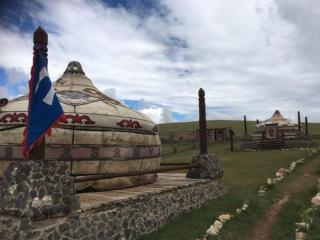7th Model ASEM: Youth Voices on Diplomacy and Asia-Europe Relations
| Date: | 21 July 2016 |
| Author: | Lise Weerden |

From 6-10 July 2016, Mongolia’s capital and largest city was host to over 100 students from 51 countries across Asia and Europe. Under the theme “20 Years of ASEM: Partnership for the Future through Connectivity,” participants of the 7th Model Asia-Europe Meeting (ASEM) gathered in Ulaanbaatar to engage in a political simulation held in the margins of the 11th ASEM Summit. Four days full of role-play exercises, practical trainings, high-level meetings and cultural activities translated in fruitful negotiations, inspirational encounters, new friendships, personal enrichment, professional development, and – not to forget – thorough insights in the legacy of Genghis Khan.
Taking place biannually, the ASEM Summit brings together the EU and its member states, Switzerland, Norway, 21 Asian countries and the Secretariat of the Association of Southeast Asian Nations (ASEAN). It constitutes an informal process of dialogue and cooperation that is characterized by an emphasis on equal partnership. Ever since 2004, Asia-Europe Meeting simulations are organized in order to generate interest in, and increase awareness of, the dialogue platform among university students and young academics. Participants are granted the opportunity to enhance their soft skills and to build a durable network among students of 51 member states. Marking the 20th Anniversary since the process was inaugurated on 1-2 March 1996 in Bangkok, Thailand, the 11th Summit and 7th Model ASEM provided key opportunities to reflect upon the past and to discuss the future direction of ASEM as a platform for inter-regional dialogue.
Starting with a welcoming dinner on Wednesday evening, the four-day conference in Ulaanbaatar was filled with plenary and workgroup sessions, practical trainings and visits to diplomatic Missions of ASEM countries located in Mongolia. After an opening ceremony and a visit to the embassy of the Lao People’s Democratic Republic, the second and third days were devoted to negotiations along the three pillars of the ASEM process: political, economic and socio-cultural. As co-moderator of the political pillar, I chaired one of the two working groups focusing on security, migration and climate change. The dialogues unfolded into interesting negotiations, with country delegates neither shying away from intense debates on substance, nor from true diplomatic controversy over words such as ‘should,’ ‘could,’ and ‘will.’ As befits true negotiations, the closing plenary went considerably over time. Yet thanks to earlier acquired knowledge on negotiation by exhaustion, an anecdote by the Executive Director of ASEF on simply stopping the clock on a similar occasion, and tireless efforts of the chair and all Model ASEM Leaders, the Chair’s Statement – in which ten priority areas concerning Asia-Europe relations have been identified – was adopted and handed over on Saturday evening July 9.
Aside from the formal part of the conference, there was plenty of time to engage in informal cultural exchanges. Over the course of four days, I found myself doing everything from walking around with Dutch stroopwafels during a cultural evening filled with national music, dance and treats, to talking about cultural stereotypes during bus rides and informal dinners, and taking photos while standing on top of the horse head of the largest equestrian statue of Genghis Khan in the world during a truly memorable cultural tour. Looking back on these activities and my engagement as co-moderator in the formal part of the conference, I am grateful for the people I have met, the things I have seen and everything that I have learned. Similar to the ARC4 Students’ Forum, it was a great learning experience – one that was only possible thanks to the tireless efforts of ASEF, as the main organiser, and the hosting country Mongolia, represented by the Mongolian Ministry for Foreign Affairs and the Mongolian Youth Federation. The 7th Model ASEM and the 11th ASEM Summit, as well as the simultaneous occurring incidents around the world, once again highlighted the importance of continuous dialogue and cooperation, of having a vision, of setting – shared – goals, and of ever-lasting commitment thereto – despite any potential setbacks. As Jack Weatherford, author of Genghis Khan and the Making of the Modern World, once stressed while reflecting on Khan’s legacy: “Without the vision of a goal, a man cannot manage his own life, much less the lives of others.” Both the 7th Model ASEM and 11th ASEM Chair’s Statement encompass a vision for Asia-Europe relations and cooperation, as well as goals that should be achieved over the upcoming years and decades. Now comes the time to stick to, and achieve them.
Would like to learn more? Have a look at this video and the website of the Asia-Europe Foundation, and do not forget to keep an eye on upcoming opportunities.
Lise Weerden is Master Student International Relations at the University of Groningen. During her bachelor's and master's she studied for six months in Hong Kong. She has been involved in research on the relationship between China and the Netherlands and worked on various projects of the Asia-Europe Foundation.

